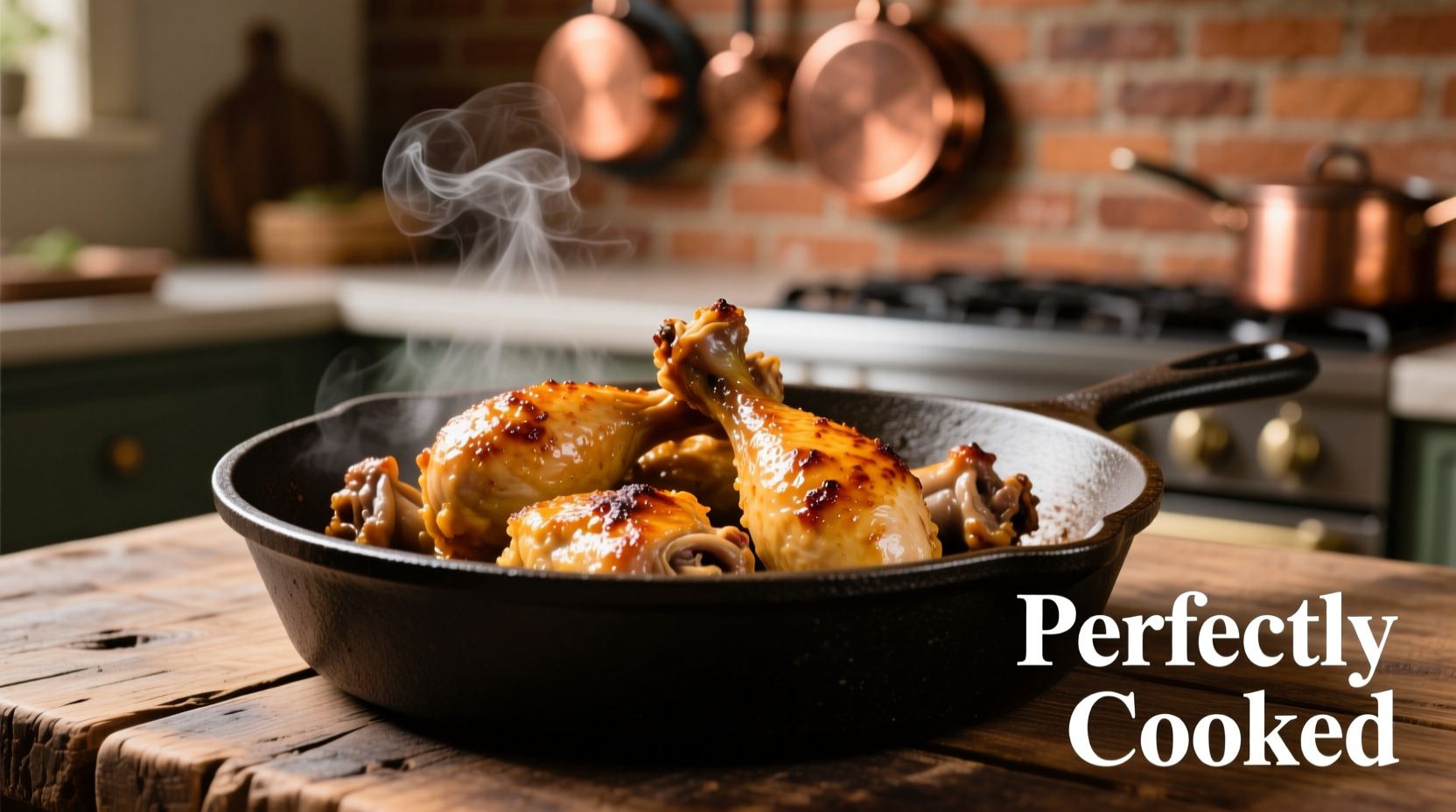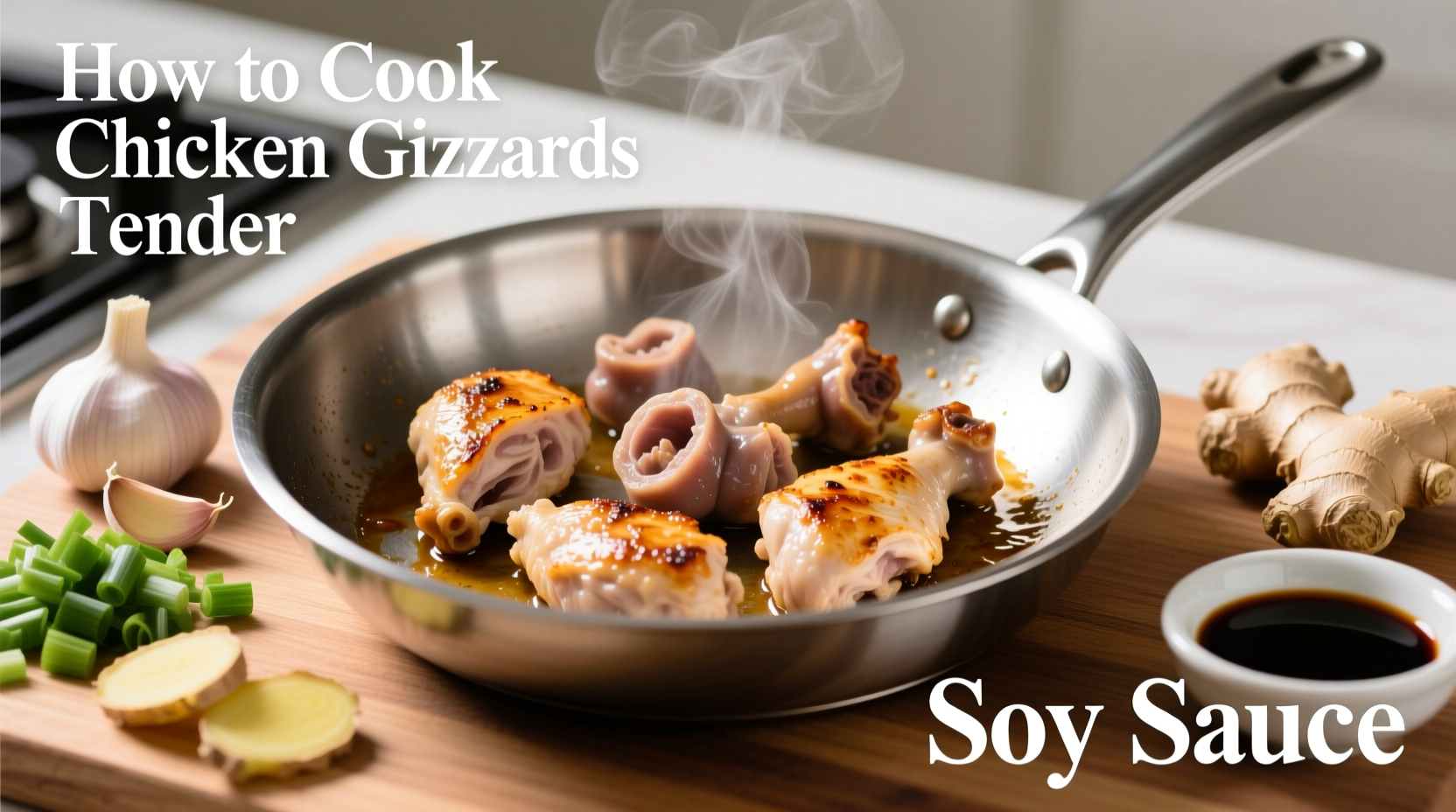The secret to tender chicken gizzards lies in proper preparation and cooking technique. Soak gizzards in buttermilk or vinegar for 2-4 hours, then simmer slowly for 45-60 minutes before finishing with high-heat cooking. This dual-method approach breaks down tough muscle fibers while preserving texture, yielding consistently tender results every time.
Chicken gizzards often get a bad reputation for being rubbery and tough, but when prepared correctly, they transform into one of the most flavorful and satisfying parts of the bird. As a chef who's worked with poultry for over 15 years across professional kitchens and home cooking environments, I've perfected the process that guarantees tender gizzards without compromising their unique texture.
Why Chicken Gizzards Become Tough (And How to Prevent It)
Gizzards are muscle tissue designed for grinding food in chickens, making them naturally dense with connective tissue. When exposed to high heat too quickly, these proteins contract and become chewy. The key to tenderness lies in breaking down collagen through controlled cooking methods that transform tough fibers into gelatin.
| Preparation Method | Time Required | Tenderness Result | Flavor Impact |
|---|---|---|---|
| Raw cooking only | 30 minutes | Poor (rubbery) | Mild |
| Vinegar soak + simmer | 3 hours | Excellent | Tangy depth |
| Buttermilk soak + braise | 4 hours | Excellent | Rich, complex |
| Pressure cooking only | 45 minutes | Good (can be mushy) | Muted |
The Critical Pre-Preparation Phase
Skipping proper preparation guarantees tough results. Follow these essential steps before cooking:
- Cleaning thoroughly: Remove any yellow membrane and silverskin - this connective tissue won't break down during cooking
- Acidic soaking: Submerge in buttermilk, vinegar solution (1:4 ratio), or lemon water for 2-4 hours (USDA recommends acid marinades for poultry safety)
- Partial cooking: Never go straight from raw to high-heat cooking - this guarantees toughness

Step-by-Step Tenderizing Process
Follow this professional chef-tested method for guaranteed tender gizzards:
Phase 1: The Soak (2-4 Hours)
Combine gizzards with buttermilk or a vinegar solution (1 cup vinegar to 4 cups water) plus aromatics like garlic, bay leaves, and black peppercorns. The acid begins breaking down muscle fibers while adding flavor complexity. This step is non-negotiable for texture transformation.
Phase 2: The Simmer (45-60 Minutes)
After soaking, place gizzards in fresh water or broth with additional aromatics. Maintain a gentle simmer (180-200°F) - boiling will make them tough. The collagen breaks down into gelatin during this phase, which is essential for tenderness. Check tenderness with a fork at 45 minutes; they should offer slight resistance but not be rubbery.
Critical Tenderizing Timeline:
- 0-30 minutes: Initial protein denaturation
- 30-45 minutes: Collagen begins converting to gelatin
- 45-60 minutes: Optimal tenderness window (check frequently)
- 60-90 minutes: Risk of becoming mushy
Phase 3: The Finish (5-10 Minutes)
After simmering, pat gizzards dry and finish with high-heat cooking. Sear in a hot cast iron skillet, grill, or stir-fry to develop flavor and texture contrast. This final step creates delicious browning while preserving the tender interior.
Avoiding Common Mistakes That Cause Toughness
Even with proper technique, these errors sabotage tenderness:
- Insufficient soaking time: Less than 2 hours won't adequately break down fibers
- Boiling instead of simmering: Temperatures above 200°F cause proteins to contract excessively
- Skipping the resting period: Let gizzards rest 5 minutes after cooking to redistribute juices
- Overcooking during finishing: They only need brief high-heat exposure after simmering
Context-Specific Cooking Recommendations
Different cooking methods work best for specific applications:
- For stews and braises: Simmer 60 minutes then add to your dish - they'll maintain texture through additional cooking
- For stir-fries: Simmer 45 minutes then quick-sear with high-heat cooking for best texture contrast
- For grilling: Simmer 50 minutes then marinate 30 minutes in oil-based marinade before grilling
- For pressure cooking: 25 minutes on high pressure followed by natural release (not recommended for beginners)
Flavor Pairing Strategies for Delicious Results
Tender gizzards absorb flavors beautifully. Try these professional combinations:
- Asian-inspired: Simmer with ginger, star anise, and soy sauce; finish with sesame oil
- Mediterranean style: Cook in tomato-based sauce with olives, capers, and oregano
- Classic Southern: Buttermilk soak followed by pan-frying with smoked paprika
- Mexican preparation: Simmer with guajillo chilies and epazote; finish on comal
Remember that properly tenderized gizzards should have a pleasant chew, not be completely soft like cooked liver. The ideal texture offers slight resistance but yields easily when bitten - think of the texture of well-cooked calamari.
Storage and Reheating for Continued Tenderness
Cooked gizzards maintain tenderness when stored properly:
- Refrigerate in cooking liquid for up to 3 days
- Freeze in broth for up to 3 months (thaw in refrigerator)
- Reheat gently in simmering liquid - never microwave
- Revive leftovers by briefly simmering in flavorful broth
When prepared using this method, chicken gizzards transform from an overlooked part into a delicacy that even organ meat skeptics will enjoy. The investment of time in proper preparation pays off with results that showcase why cultures worldwide have cherished this ingredient for centuries.
How long should I soak chicken gizzards before cooking?
Soak chicken gizzards for 2-4 hours in an acidic solution like buttermilk or vinegar water. This critical step begins breaking down tough muscle fibers. Never skip this phase if you want tender results, as gizzards contain dense connective tissue that requires proper preparation.
Can I cook chicken gizzards without pre-soaking?
You can cook gizzards without pre-soaking, but results will likely be tough and rubbery. The acidic soak is essential for tenderizing the dense muscle fibers. If short on time, use a pressure cooker for 25 minutes, but traditional soaking and simmering produces superior texture and flavor.
What's the ideal internal temperature for tender chicken gizzards?
Chicken gizzards reach optimal tenderness between 160-170°F internal temperature after proper simmering. Unlike breast meat, they require extended cooking time to break down collagen. Use a meat thermometer to check during the simmering phase, but remember that texture testing with a fork is more reliable than temperature alone.
Why are my chicken gizzards still tough after cooking?
Gizzards remain tough when either undercooked during the simmering phase or exposed to high heat too early in the process. Ensure you simmer for 45-60 minutes after soaking, maintaining a gentle simmer (not boil). Also verify you've removed all yellow membrane before cooking, as this connective tissue won't break down.
Can I use baking soda to tenderize chicken gizzards?
Yes, a baking soda solution (1 teaspoon per cup of water) can tenderize gizzards when used for 30-45 minutes. However, this method can create a slightly soapy flavor if overused. Traditional acid-based soaking with vinegar or buttermilk produces more balanced flavor while effectively tenderizing the meat.











 浙公网安备
33010002000092号
浙公网安备
33010002000092号 浙B2-20120091-4
浙B2-20120091-4